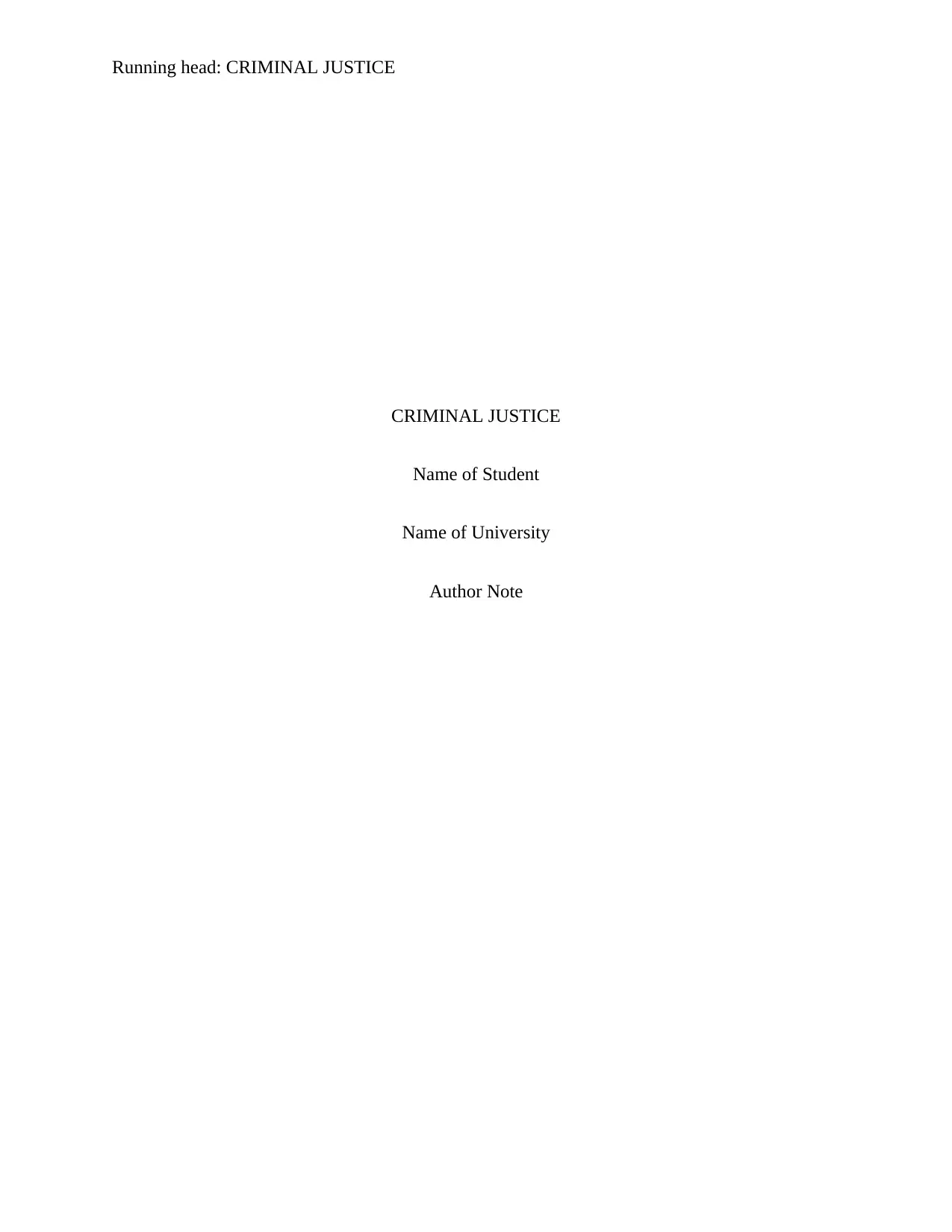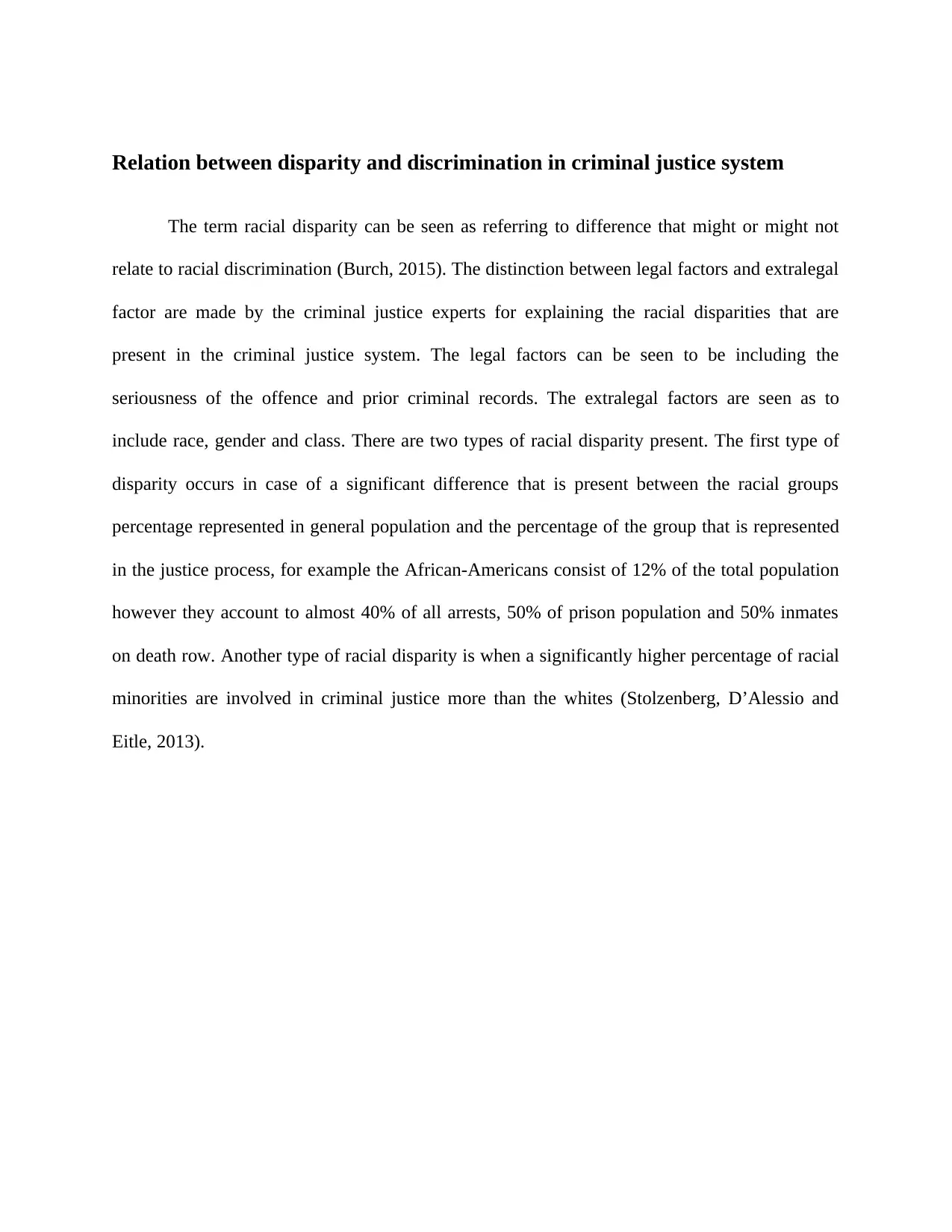Criminal Justice: Racial Disparity and Discrimination in the US
VerifiedAdded on 2022/09/29
|3
|303
|19
Homework Assignment
AI Summary
This assignment explores the issue of racial disparity and discrimination within the criminal justice system. It differentiates between legal factors, such as the seriousness of the offense and prior criminal records, and extralegal factors, including race, gender, and class. The assignment highlights two types of racial disparity: the first type involves a significant difference between the racial groups' percentage in the general population and their representation in the justice process, with examples from African-American statistics. The second type highlights how a significantly higher percentage of racial minorities are involved in criminal justice compared to whites. References to relevant literature are also included.
1 out of 3









![[object Object]](/_next/static/media/star-bottom.7253800d.svg)